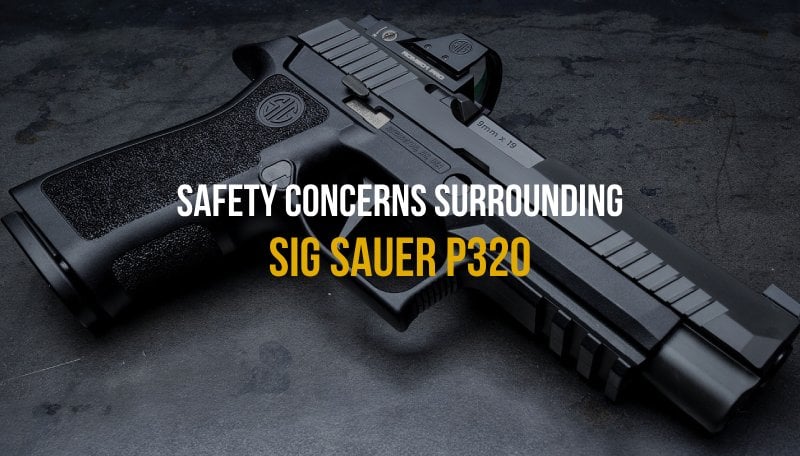
The SIG Sauer P320, released in 2014, a pistol that has gained immense popularity across the United States, is now under scrutiny due to safety concerns. This handgun isn’t just a favorite among civilians; it’s also the standard-issue sidearm for every branch of the U.S. military.
However, the P320’s reputation has been marred by alarming reports of unintentional discharges. Over 100 individuals have come forward claiming their P320s fired without them pulling the trigger, leading to at least 80 injuries. These incidents are not isolated, raising questions about whether this popular handgun harbors a potentially dangerous defect.
SIG Sauer is currently faced with lawsuits from individuals who contend that the company knowingly sold a defective product. These litigations have overshadowed the P320’s previously stellar reputation and sparked a broader conversation about firearm safety.
As a responsible gun store located in North Richland Hills, TX, GRITR Sports believes it’s crucial to inform customers and the general public about these potential issues with the P320. We understand that concerns have been raised about the SIG Sauer P320’s internal design. This article aims to provide clear, balanced information on the subject.
Table of Contents
The SIG P320 Drop Issue
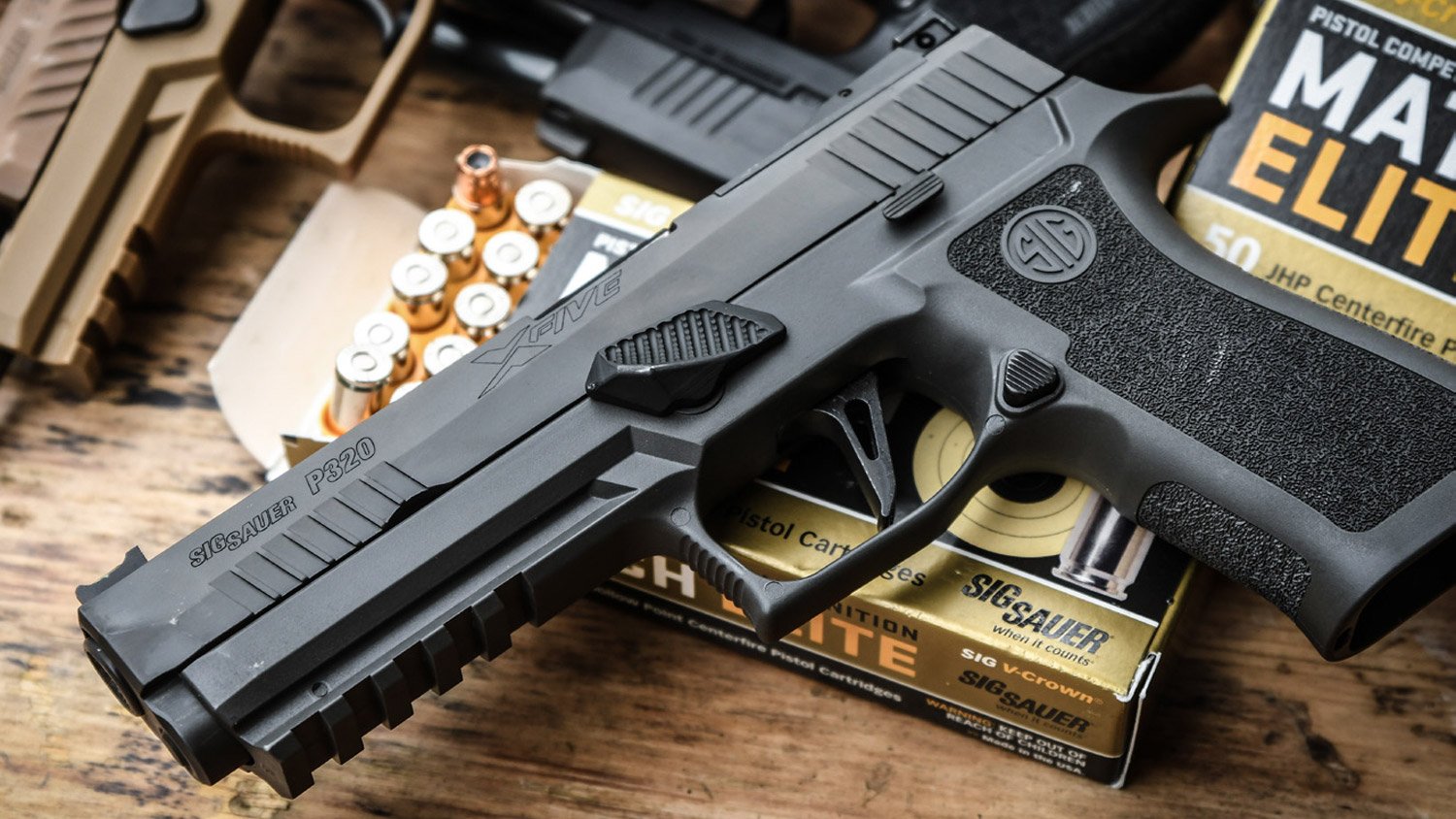
The first reported shooting incidents involving the SIG Sauer P320 began to emerge in 2016. One notable case involved Officer Michael Richardson of the Roscommon Sheriff’s Department in Michigan. The incident, caught on his body camera, shows Richardson exiting his cruiser when, unexpectedly, his holstered P320 fires. Richardson’s incident report reveals a statement: “As I exited the patrol vehicle, my weapon discharged while being completely in the holster.” Although court records suggest that a seatbelt buckle may have depressed the trigger, neither the gun nor the seat belt is visible in the video footage, leaving room for questions.
Fast forward to August 2017, whispers about potential P320 safety issues began circulating among the Dallas Police Department. These rumors were fueled by a leaked memo and outdated manual notes suggesting the pistol could discharge when dropped. As word spread and concern escalated, the Dallas PD issued a statement acknowledging the temporary suspension of the P320 out of precaution. However, after working closely with SIG Sauer to address the safety concerns, the department reinstated the P320 into service.
Around the same time, a Texas gun store decided to investigate these rumors by conducting its own P320 drop tests. The results were alarming: the P320 consistently fired when dropped at a specific angle. Despite SIG’s insistence that the P320 was drop-safe and that there had been no reported drop-related incidents in the U.S. commercial market, the gun store’s findings painted a different picture. They discovered that when the P320 was dropped with the bore facing upwards and the frame and slide contacting the ground simultaneously, the trigger continued to move rearward, causing the pistol to fire. This issue was consistent across all calibers, frame sizes, and types of ammunition.
However, the store also made an interesting discovery. The P320 X5 model, which has a lighter, flat trigger lacking reinforcement on the backside, did not fire upon impact. To test this further, they replaced the trigger in a standard P320 model that was firing almost every time dropped with the lighter X5 trigger. With this modification, the unintended firings dropped to less than 10%.
Not stopping there, they further reduced the weight of a stock curved trigger by about 30%, resulting in a P320 that did not fire a single time in over 50 drops. This suggested that the weight of the trigger was indeed a significant factor in the drop-fire issue.
A day after the video was posted, SIG Sauer launched a voluntary upgrade program for customers to have redesigned components installed. From that day, a P320 owner could modify their pistols at no additional cost, which, basically, eliminated the drop-fire issue.
Indeed, SIG Sauer didn’t issue a formal recall for the P320 pistols already on the market, and there were millions of them. So if you own an older version of the SIG P320, we advise you to take advantage of the program
About the P320 Safety Mechanisms
The P320 is classified as a striker-fired handgun. This means that each trigger pull prompts an internal spring-loaded pin, known as a striker, to propel forward and ignite the bullet’s primer, subsequently launching the round from the barrel.
One aspect that sets the SIG P320 apart is its design which allows it to remain fully cocked when at rest. Unlike some handguns where pulling the trigger draws back the striker, the P320’s trigger mechanism merely releases it. While this might seem unique to the SIG, it’s not. There are many fully-cocked striker pistols in circulation, and they’re favored for their crisp, clean triggers, fulfilling the demands of the market.
There’s no inherent danger in any striker design provided it’s equipped with reliable safeties. To offset the risk of unintentional discharge, some pistols incorporate one or more external safeties. These safeties prevent the firearm from discharging unless manually deactivated. Manual thumb safeties, for instance, enable users to switch between modes where the trigger can or cannot be pulled.
Interestingly, the military variant of the P320 comes with a manual thumb safety, and SIG Sauer offers a similar version for civilians. However, nearly all civilian-branded P320 models lack this external safety feature. When faced with concerns about the absence of the external safety, SIG responded by emphasizing that many users, including law enforcement agencies, prefer firearms without external safety devices based on their operational philosophy.
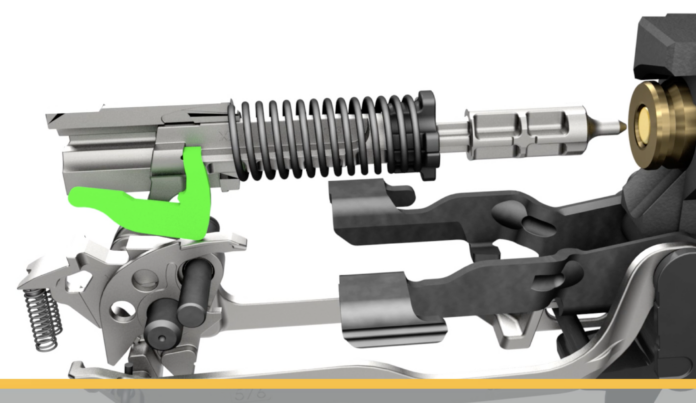
Instead of external safety mechanisms, civilian models of the SIG P320 feature internal safeties. The primary one is a safety lock lever designed to catch the striker in case of malfunction, preventing it from impacting the primer of the round. This lever is lifted when the trigger is pulled and only moves enough to allow the striker to bypass it near the end of the trigger pull.
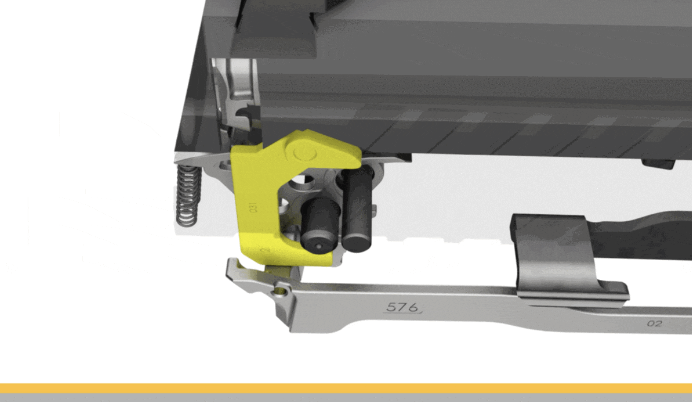
The second internal safety is the disconnector, which prevents the weapon from discharging when the slide is drawn backward. It pushes the trigger bar down when the slide isn’t fully closed, meaning that the trigger bar is incapable of contacting the sear, hence a trigger pull can’t release the striker.
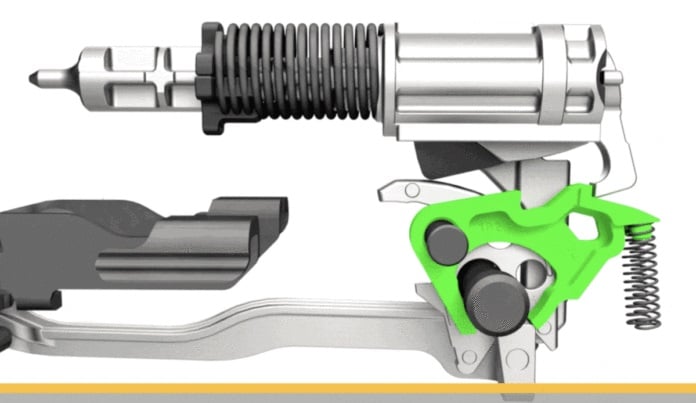
The SIG P320 incorporates a lesser-known but critically important third internal safety mechanism – a backup sear notch. This feature is designed to catch the striker if it inadvertently slips off the primary sear surface. Assisted by two springs that exert upward pressure, the sear is constantly held up against the striker, only moving down to release the striker at the very end of the trigger’s motion.
Unless the trigger is nearly fully pulled back, both the sear and its notches stay in position, holding the striker to the rear. This ensures that the firearm remains secure and won’t discharge unintentionally.
The dual sear springs at the rear offer constant upward pressure, ensuring total sear engagement under virtually any circumstance. This not only alleviates the need for maintaining extremely tight tolerances on dozens of components but also accounts for potential dimensional changes caused by wear, foreign debris, and more.
Despite the SIG P320 is a fully-cocked striker pistol, it is designed with multiple safety mechanisms to prevent accidental discharge. Its internal features, including a safety lock lever, a disconnector, and a secondary sear notch, all work together to ensure the firearm only discharges when intended.
What Does SIG Sauer Say?
SIG Sauer asserts with confidence, “The SIG Sauer P320 model pistol is among the most tested, proven, and successful handguns in small arms history.” This pistol not only conforms to the standards established by the National Institute of Justice (NIJ) and the Sporting Arms and Ammunition Manufacturers’ Institute (SAAMI) but also aligns with the regulations of numerous federal and state agencies. Furthermore, it meets and exceeds all US safety standards.
However, it’s important to note a nuance here: the national standards SIG Sauer says it meets are voluntary in nature. Neither the NIJ nor SAAMI mandates the inclusion of specific safety mechanisms in guns, nor do they require endurance testing, which evaluates a firearm’s performance after prolonged use. Still, the P320 has been successfully torture-tested by many reviewers.
Addressing the criticism surrounding uncommanded discharges, which some attribute to slight shifts of small components within the P320, SIG Sauer counters this notion. The company states it’s not possible “given the extensive and rigorous testing conducted by SIG Sauer, the U.S. military, federal law enforcement agencies, and other military and law enforcement agencies around the world.”
Lastly, SIG Sauer offers a perspective on the root cause of the reported discharges. The company believes these incidents were not a product of design flaws but rather resulted from careless handling of their firearm.
What Should You Do If You Own a SIG P320?
The ongoing legal proceedings surrounding the SIG Sauer P320 pistol present a complex situation. SIG Sauer maintains that the P320 is designed to fire only when the trigger is pulled. However, this assertion is being challenged by numerous lawsuits. We believe that we must refrain from taking sides until all facts are presented, and a judicial decision is reached.
It’s also crucial to understand the complexities inherent in the firearms industry. The sector is fraught with passionate debates and divided interests, ranging from Second Amendment advocates to anti-gun proponents and competitors. Judgments should not be made hastily. They require comprehensive information from a variety of sources. Therefore, it’s vital to listen to the arguments from both sides to form a balanced perspective.
So, you may wonder, what steps should you take if you are a SIG P320 owner?
Firstly, consider taking advantage of the Sig Sauer P320 Voluntary Upgrade Program. Through this initiative, the company offers to reduce the physical weight of the trigger, sear, and striker, while also adding a mechanical disconnector. These upgrades come at no additional cost to you.
Secondly, if you habitually carry your SIG P320 with a round in the chamber, it might be wise to stop doing so. For instance, consider the case of Ashley Catatao. This Boston police officer now chooses not to keep a bullet in the chamber of her duty P320.
We do not wish to place the onus solely on the gun carriers for all the P320 incidents. However, following safety guidelines is paramount. The four fundamental gun safety rules are:
- Treat all guns as if they are always loaded.
- Never point the gun at anything you are not willing to destroy.
- Keep your finger off the trigger until your sights are on the target.
- Be sure of your target and what’s beyond it.
Moreover, maintaining your pistol’s condition is crucial. Regular cleaning, lubrication, and protection can prevent many mishaps. Also, ensure to replace any worn or broken parts promptly to keep your firearm in optimal working condition. Staying proactive in your pistol maintenance can go a long way in ensuring your safety.
FAQ
Does a SIG P320 have a safety?
Yes, the SIG P320 does have three internal safety mechanisms. While there is no external safety on most Sig P320s, the military version of the P320 and its civilian-grade counterpart have it.
What SIG Sauer pistol is a police issue?
The SIG Sauer P320 is widely used among law enforcement agencies. The P320 is also a military standard-issue sidearm.
Can Sig P320 go off by itself?
There have been allegations of the Sig P320 discharging on its own, however, Sig Sauer has defended the firearm by emphasizing that it passed all testing standards and has several internal safeties that prevent it from uncommanded discharge.
Why doesn’t the Sig P320 have an external safety?
According to SIG, many users, including law enforcement agencies, prefer firearms without external safety devices based on their operational philosophy.




Comments (8)
Emmanuel Ksays:
September 6, 2023 at 9:26 pmA bit finicky during break in, but overall it’s a wonderful pistol. Any semi auto pistol can potentially get dangerous if mishandled IMO. Learn safety protocols and keep your pistol AND your holster in good condition
Stusays:
November 9, 2023 at 7:14 pm100 people? Really? 100 people. Theyve sold millions of these things, I mean millions with an M. Watch the video of the cop that shot himself as it accidentally went off in his hand nonetheless. Get real. Don’t blame inanimate objects for your problems.. Great. Reliable. Firearms
Gragsays:
December 12, 2023 at 4:05 pmI carry duty 320 as my primary CCW (got it later with the drop issue fixed). It gets the hell beaten out of it but has never gone off without me pulling the trigger
haroldsays:
August 5, 2024 at 7:48 pmI got my p320 when they first came out, with a defective trigger. I personally had no issues with it but still opted for the redesign program, just to be safe. Great gun, no misfires. Recently got the Legion too. Love it
PJsays:
November 22, 2024 at 10:04 amMine is civilian version and has an external safety. So unless Sig added it within the last year, or they were mandated to add it to California versions, this is an inaccurate statement.
Michaelsays:
February 1, 2025 at 11:55 amBought sig 320 m18 that was manufactured in may 2024 with manual safety. I like to carry WTH round in chamber, but reluctant because negative reviews on unintended discharge. Any recommendations? Thank you
GRITR Sports Teamsays:
February 2, 2025 at 9:51 pmMost UDs are caused by the user not following the gun safety rules and poor gun/holster maintenance, rather than flaws in the gun.
While a manual safety adds an extra layer of protection, it’s important to remember it isn’t foolproof. It works best when combined with good gun-handling habits like muzzle control and trigger discipline. Safe gun handling ultimately comes down to following the rules—that’s the reality.
So, if you’re sure that you follow all the gun safety rules properly, keep your holster in good condition, and NOT treat your manual safety like it’s some kind of fail-safe solution, you’ll be fine carrying your M18 with the round in chamber
DGsays:
March 19, 2025 at 9:38 amAs others have said, follow gun safety rules ALWAYS and you should be fine. IMHO, I would rather have a round in the tube and trust my ability to avoid a AD rather than need the weapon and have to take the time to rack the slide. Self defense situations get hairy in a hurry. If that sounds like the voice of experience, it’s because it is.